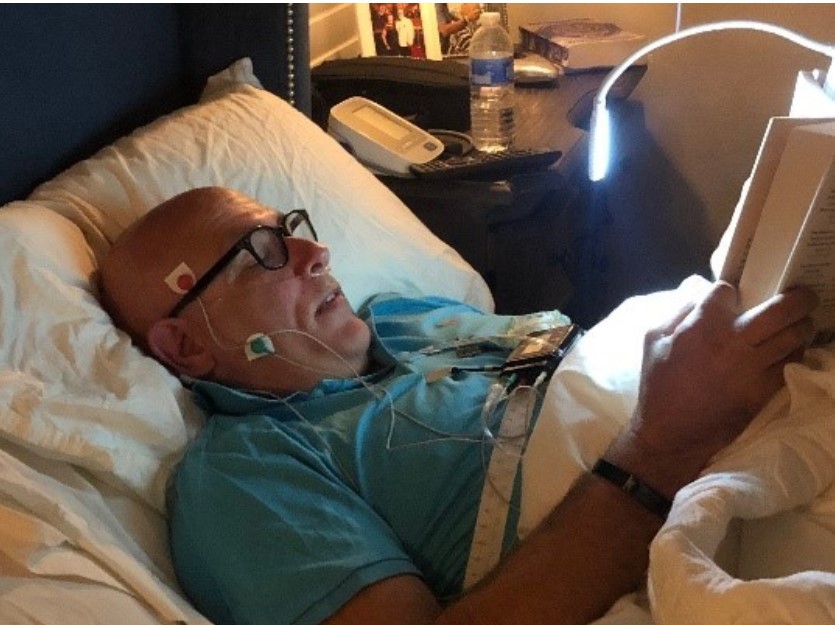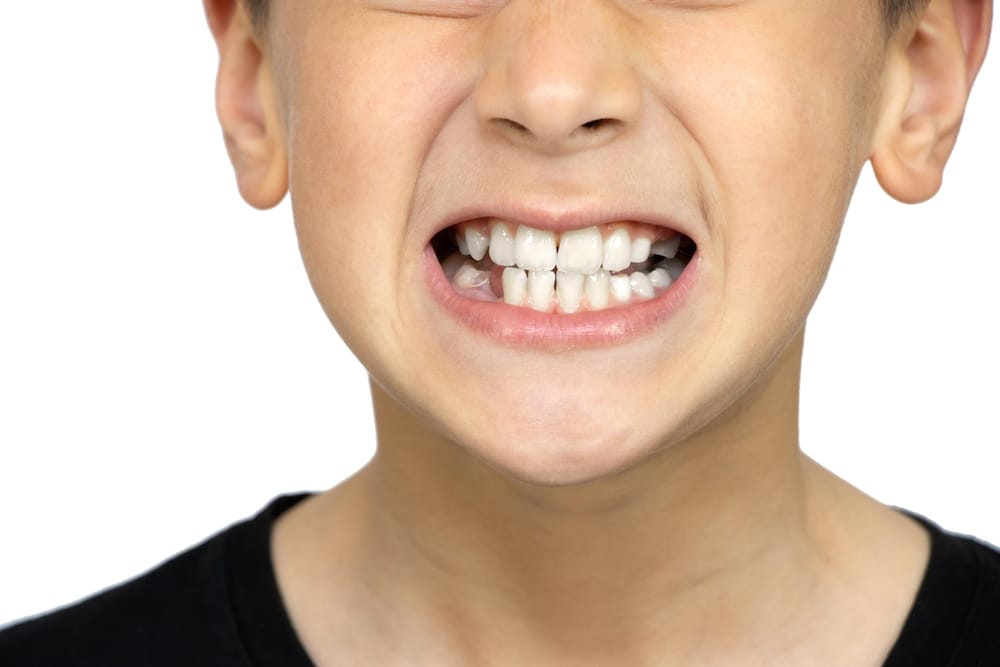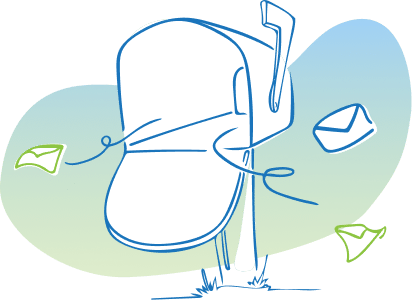In the 20 years I have been involved in the treatment of sleep disordered breathing I have talked to hundreds of dentists their staff and their patients about daytime sleepiness and sleep quality. Frankly I was starting to feel a little judgy. How is it possible that people cannot tell that they are sleepy and that they need to get treatment. Well then I noticed I was falling asleep at my desk in the afternoon and I noticed that I was closing my eyes while driving home (very dangerous). I realized I needed to get treated with a SilentNite sl oral appliance if possible or CPAP if necessary. I have become the guy I have been describing in talks for over 20 years middle age, moderate snorer, sleepy and in need of treatment.
My first step was to fill out a questionnaire I chose the STOP-Bang and I scored a 5 out of 8 which means I have high risk of OSA. Interesting but not a huge surprise. The questionnaire is an interesting tool however being a male over 50 with a neck size over 17” would make me a 3 out of 8 so, while an indicator of risk I still was not very alarmed or surprised.
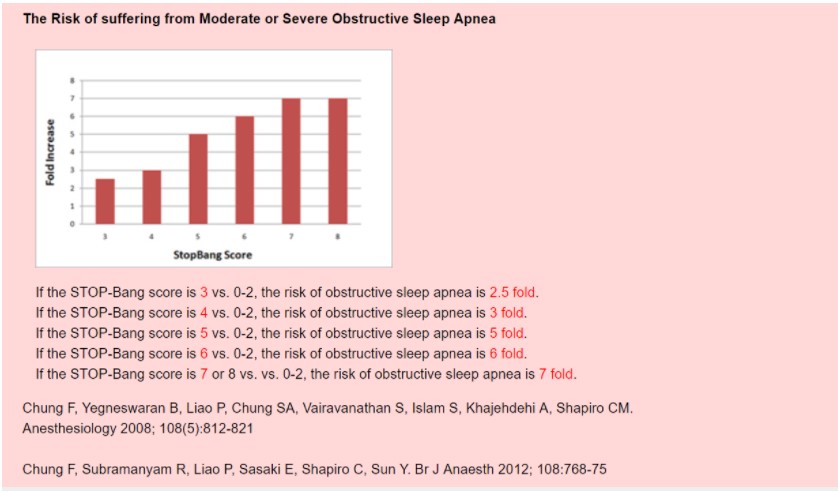
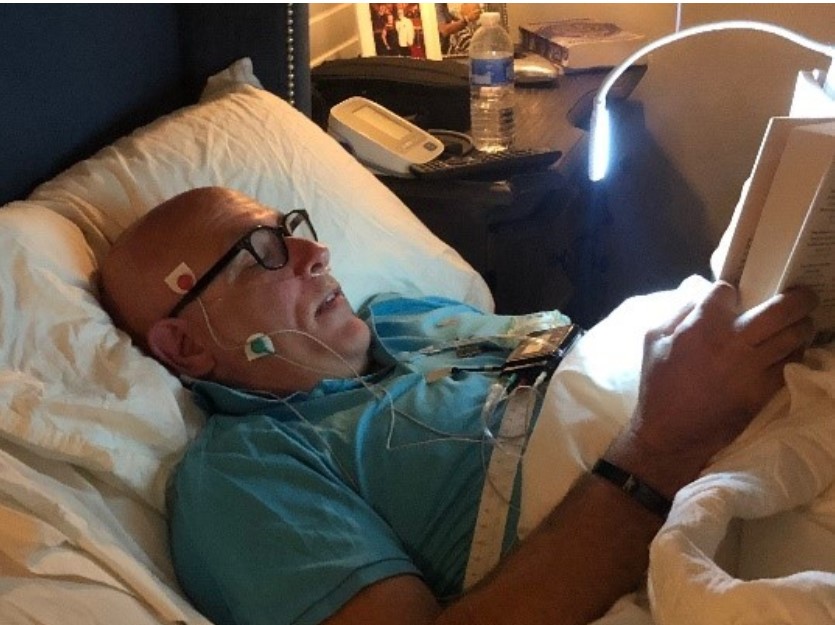
Next step was to do a home sleep study. I set myself up with a Nox T3 which has 18 channels and since I am in the dental field I also added EMG leads to look at Bruxism, tooth grinding and clenching. It is important to remember that Bruxism is the dental sleep disorder, and in many cases sleep disordered breathing shows up in the dental area as worn broken and chipped dentition (more about that later). The study went pretty well, all the leads stayed on and I was able to put the two RIP belts, Nasal cannula and pulse oximeter on. I even remembered to turn the Nox T3 home sleep testing device on. I did wake up earlier than usual so the length of the study was not as long as I would have liked.
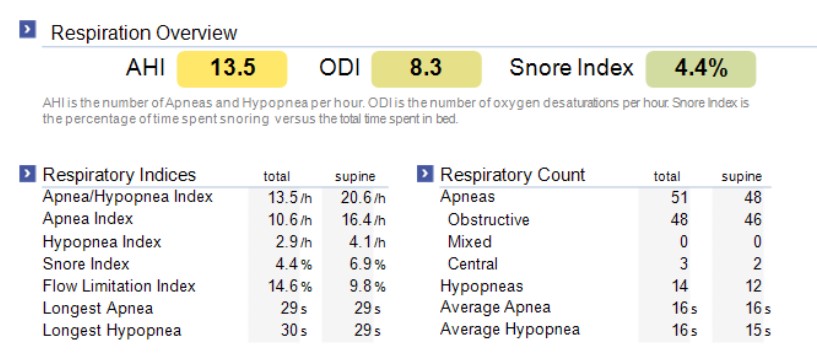
Above is the report from my initial home test. I was pleased to find that my condition was still mild but at the upper register AHI is the threshold for moderate apnea. I made a dental appointment that day to have a Silent Nite sl made so that I could manage my airway by changing my jaw position. I took advantage of the one for Home one for Travel option so that I can keep an appliance in my suitcase for travel and leave the my home appliance in the same spot every morning (this is a popular option).
SilentNite sl is a Mandibular Advancement Device (MAD) that is custom fabricated by Glidewell Dental Lab it is made on the prescription of a dentist and has an FDA indication for use for snoring, gasping and mild obstructive sleep apnea cases. The mechanism of action for this device is similar to a Herbst device, an EMA device or a Narval device. These appliances engage the upper and lower teeth and hold the jaw forward through the use of plastic, metal or elastic arms. All of these devices can be titrated 10 to 15 mm so the therapeutic range of the device can be calibrated as needed. Other sleep appliances include the EMA, Oasys,and the DreamTAP.
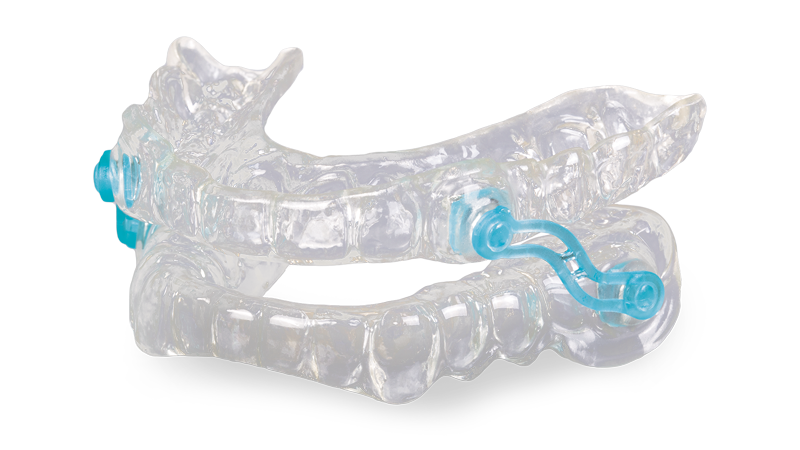
I received my Silent Nite sl and resolved to start wearing it that night. The appliance comes with 6 sets of different length connectors 21mm to 26mm the shorter the arms the more jaw advancement. The appliance arrives with the 25mm connectors in place. These connectors are easy to change and some dentists allow their patients to make their own adjustments.
I went to bed the first night wearing the appliance and slept pretty well, I thought. In fact I was celebrating complete victory for about 5 nights. I felt better and was sleeping well. That was when my wife broke it too me that in fact I was snoring like crazy with the appliance in my mouth. Snoring is the sound that a partially collapsed airway makes. Time to adjust the connectors to open my airway more. I adjusted my jaw forward 1 mm by changing to the 24mm connectors.
When you change your jaw position even by a small amount it feels different and some people need time to get comfortable. It turns out I am not one of those people. I slept great. I was concerned that my subjective reports of success might happen again so I took the home sleep test to confirm that the treatment was going in the right direction.
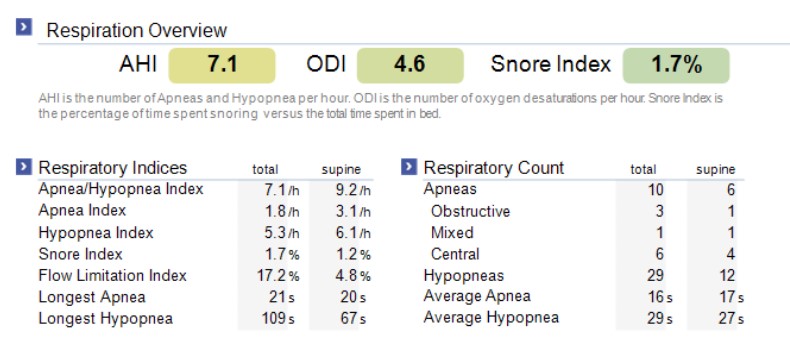
I was pleased to find that my Apnea was almost cut in half while using the appliance. My snoring was cut from 4.4% of the night in the first study to a manageable 1.7% of the night in the second study. I found the appliance comfortable and easy to use. AHI of 7.1 still indicates mild OSA however and now I wanted to try the next set of arms to see if I could get my apnea under an AHI of 5 which is considered normal. I changed the connectors a third time to the 23mm connectors. My sleep study changed again. I had achieved my goal of a normal sleep AHI but you will see that my snoring actually increased.
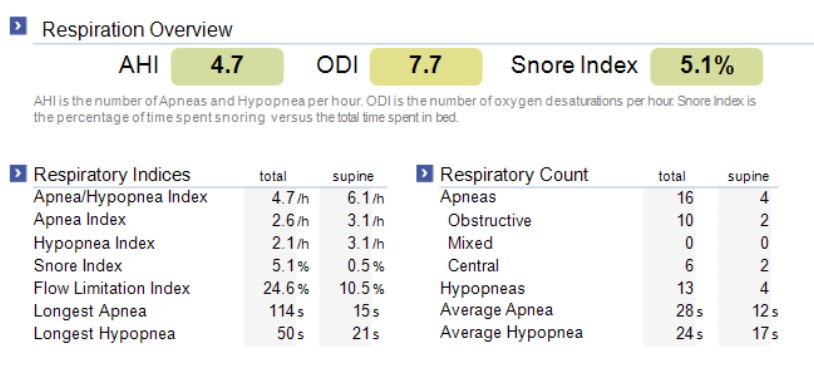
So the big question is what happened to my perceived daytime sleepiness. I would say it has resolved, I am not as sleepy late in the day and more importantly I seem to have recovered my ability to bounce back from a single late night or an early morning. In the past it was very difficult for me to recover after one of those events. Now it seems to be fairly easy.
The data seems to support the fact that my sleep apnea is well controled with a Silent Nite Sl. My wife reports that things are quiet and peaceful when I am sleeping and that was really my primary reason for seaking treatment.

